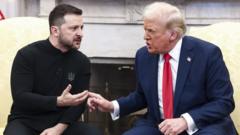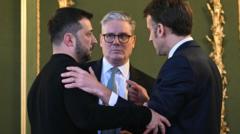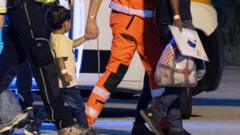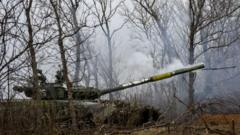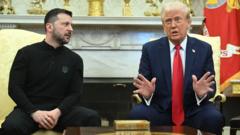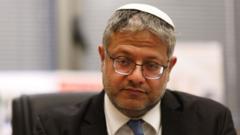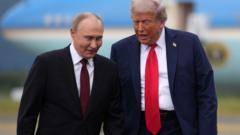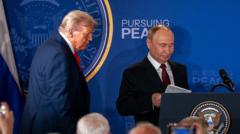President Trump is showcasing a controversial military strategy that emphasizes a strong presence at home while adopting a cautious stance on international conflicts, revealing a complex relationship with the military.
Trump's Military Maneuvers: A Balance of Domestic Strength and Foreign Caution

Trump's Military Maneuvers: A Balance of Domestic Strength and Foreign Caution
President Trump's Military Strategy Divides Opinion Amidst Rising Tensions Abroad
When President Trump first proposed a military parade in Washington, he faced stark criticism from within military ranks, notably from a four-star general who likened the spectacle to tactics used by dictators. However, nothing could deter Mr. Trump’s vision; tanks will roll through the nation’s capital this Saturday for the first time in decades, indicating a marked shift towards nationalist pride in military displays.
Simultaneously, Mr. Trump's administration has deployed troops to cities like Los Angeles to suppress protests resulting from his immigration policies, showcasing a willingness to use military force domestically that contrasts sharply with his avoidance of foreign entanglements. Just days ago, a significant escalation occurred in the Middle East involving Israel and Iran, yet Trump opted for restraint, refraining from joining Israel’s offensive against Iranian nuclear facilities and instead advocating for diplomatic negotiations.
This juxtaposition reflects Trump's multifaceted relationship with the military: he appears more inclined to deploy U.S. forces against civilian unrest than against international adversaries, celebrating military displays at home while dismissing "endless wars" abroad. His actions have been characterized by contradictions; a man who never served due to a controversial health exemption and whose past remarks disparaging veterans haunt him, yet who utilizes military presence as a political tool.
Trump has neatly assembled a cadre of loyal military advisors, sidelining those he deems insufficiently committed to his agenda. Recently, he delivered speeches at prestigious military academies that echoed the choruses of campaign rally rhetoric, reinforcing his commitment to bolstering America’s military image.
This complex dynamic—an image of strength at home coupled with reluctance to engage internationally—paints a unique portrait of a commander in chief unlike any other, raising questions about the future of U.S. military engagement both at home and abroad.
Simultaneously, Mr. Trump's administration has deployed troops to cities like Los Angeles to suppress protests resulting from his immigration policies, showcasing a willingness to use military force domestically that contrasts sharply with his avoidance of foreign entanglements. Just days ago, a significant escalation occurred in the Middle East involving Israel and Iran, yet Trump opted for restraint, refraining from joining Israel’s offensive against Iranian nuclear facilities and instead advocating for diplomatic negotiations.
This juxtaposition reflects Trump's multifaceted relationship with the military: he appears more inclined to deploy U.S. forces against civilian unrest than against international adversaries, celebrating military displays at home while dismissing "endless wars" abroad. His actions have been characterized by contradictions; a man who never served due to a controversial health exemption and whose past remarks disparaging veterans haunt him, yet who utilizes military presence as a political tool.
Trump has neatly assembled a cadre of loyal military advisors, sidelining those he deems insufficiently committed to his agenda. Recently, he delivered speeches at prestigious military academies that echoed the choruses of campaign rally rhetoric, reinforcing his commitment to bolstering America’s military image.
This complex dynamic—an image of strength at home coupled with reluctance to engage internationally—paints a unique portrait of a commander in chief unlike any other, raising questions about the future of U.S. military engagement both at home and abroad.



